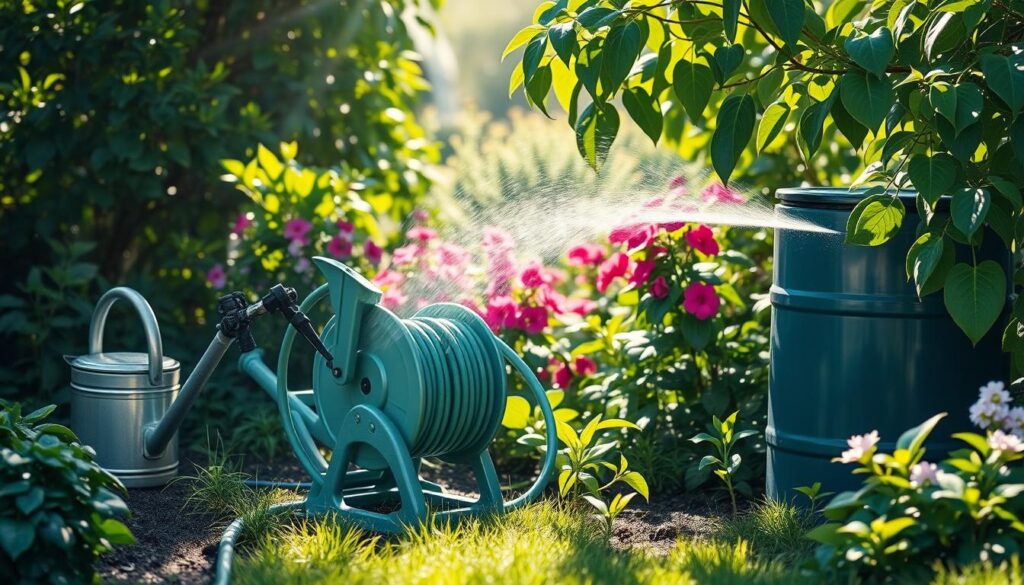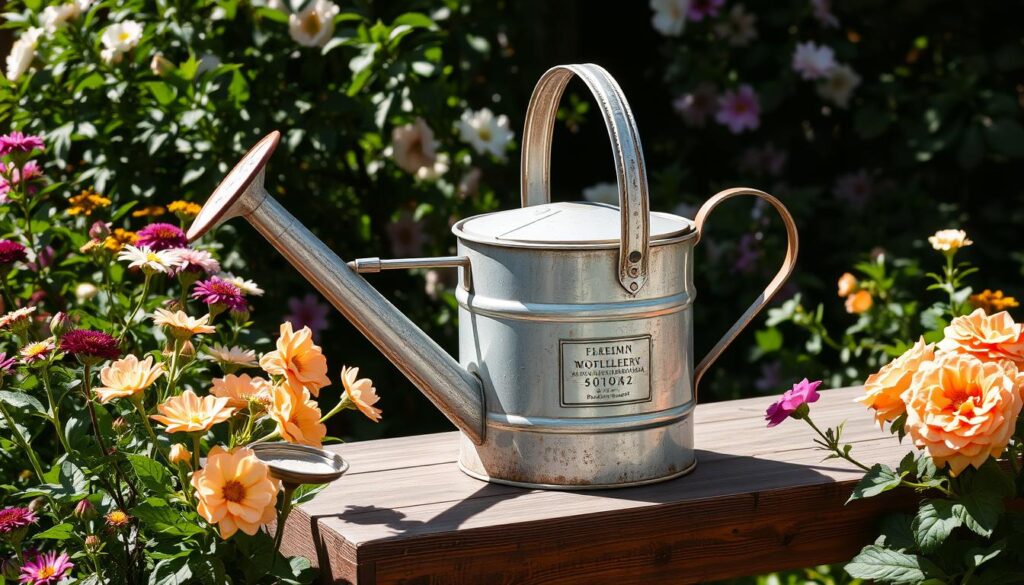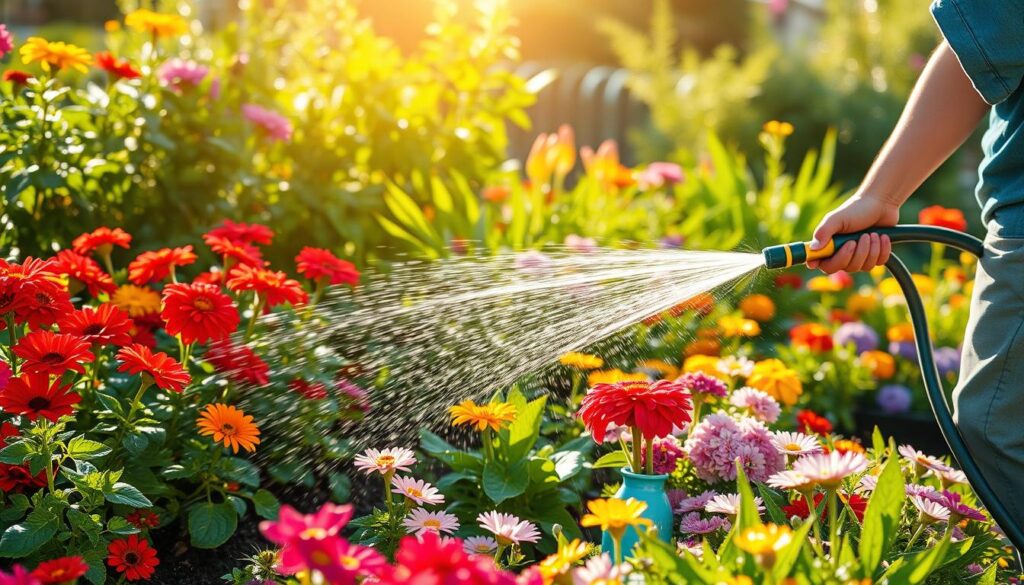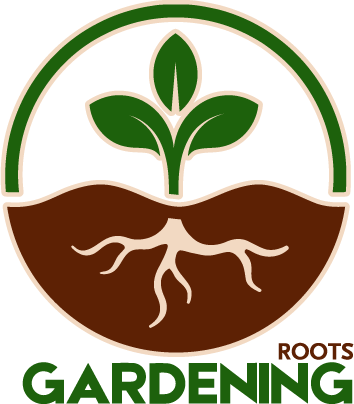Table of Contents
“The glory of gardening: hands in the dirt, head in the sun, heart with nature. To nurture a garden is to feed not just the body, but the soul.” – Alfred Austin, British Poet Laureate
Watering your garden is key to its success. It’s not just for beginners; even experienced gardeners need to get it right. This guide will teach you the watering techniques to keep your garden looking its best. Whether you’re new to gardening or have years of experience, you’ll find something useful here.

Key Takeaways
- Discover the versatility and benefits of the classic watering can for targeted, gentle watering.
- Learn when to transition from a watering can to a hose for larger gardens and more efficient coverage.
- Understand the importance of choosing a high-quality hose and the right nozzle for your watering needs.
- Master the deep watering technique to ensure established plants receive the moisture they need.
- Explore the convenience of a retractable hose reel for navigating large outdoor spaces.
The Humble Watering Can: A Gardener’s Essential
The classic watering can is a must-have for gardeners. It’s versatile and essential for any garden. Its design and benefits make it key to keeping gardens healthy and green.
The Classic Watering Can: Why Every Gardener Should Own One
The Classic watering can has become an iconic symbol of gardening. Its shape and handle are both useful and nice to look at. It’s built to last and gives plants the care they need.
Advantages: Flexibility for Quick Spot Watering
The watering can is very flexible. It’s better than big hoses or systems for watering specific spots. It’s great for watering delicate plants or hard-to-reach areas.
Usage Tips: Using the Nozzle Breaker for Gentle Watering and Flexibility for Spot Treatments
Use the nozzle breaker on your watering can for gentle watering. It’s perfect for watering can use on seedlings and other sensitive plants. It waters them softly, without harming the soil or leaves.

“The watering can is a time-honored tool that allows gardeners to precisely control the application of water, ensuring that every plant receives the nourishment it needs to thrive.”
Upgrading to the Hose: When to Transition
As your garden grows, a watering can might not be enough. It’s time to think about using a hose. But when is the best time to switch from a watering can to a hose?
The choice to use a hose depends on your garden’s size and water needs. A watering can works well for small spaces, giving you control over each area. But for bigger gardens, a hose is better. It lets you water more areas faster and more efficiently.
If filling your watering can takes too long or you can’t reach all parts of your garden, it’s time for a hose. Big gardens need more water, and a hose can give it to them. This keeps your plants healthy and strong.
Also, a hose is great for mature plants. It lets you water them deeply and slowly, which is good for their health. This can really help your plants grow better.

Choosing between a watering can and a hose depends on your garden, plants, and how you like to water. Think about what your garden needs. This will help you make a smooth switch to hose watering. It will make taking care of your garden easier and more fun.
Choosing the Right Hose: Importance of Quality
Watering your garden is easier with the right hose. A quality hose makes watering more efficient and effective. It’s a smart investment for your garden’s health.
Premium Hoses
Premium hoses are better than cheaper ones. They’re made from strong materials like heavy-duty rubber or reinforced vinyl. This means they last longer and work better.
They also don’t kink or leak as much. Plus, they have extra features like reinforced ends and adjustable nozzles. These make them more versatile and long-lasting.
Length Recommendations
Choosing the right hose length is key. The length you need depends on your garden’s size and how far it is from the water source. A 50-foot hose works for small gardens. But bigger gardens might need a 75-foot or 100-foot hose.
Getting the right length helps you water efficiently. It keeps your hose from straining or becoming a tripping hazard. This leads to healthier plants and a more beautiful garden.
Nozzle Options: Benefits of Gentle, Rain-Mimicking Nozzles
Choosing the right nozzle for your garden hose is key. Not all nozzles are the same. Go for gentle, rain-mimicking nozzles for the best results.
These nozzles spray water softly, like rain. This method keeps the soil in place, stops water from running off, and helps your plants get the water they need. It’s gentle on their roots.
- Gentle watering nozzles: Deliver a soft, even spray that won’t disturb the soil or damage fragile seedlings.
- Rain-mimicking nozzles: Simulate the natural flow of rainwater, providing a soothing, consistent watering experience.
- Consistent even watering: Ensures all areas of your garden receive the appropriate amount of moisture, promoting healthy growth.
Choosing the right nozzle can make a big difference. It helps your plants get the gentle, rain-like water they love. Invest in quality nozzles for a healthy, beautiful garden.
“The key to successful gardening is finding the right balance between watering intensity and plant needs. Gentle, rain-mimicking nozzles help me achieve that perfect equilibrium.”
Deep Watering Technique: How to Apply Slow, Steady Watering for Established Plants
As your garden grows, so do the needs of your plants. Young seedlings need lots of water, but older plants need something different. They benefit from deep watering.
Deep watering means using a slow, steady stream of water. This helps the roots grow deeper. It lets them reach moisture in the soil, keeping the plants healthy.
- Set your hose nozzle to a gentle, low-pressure stream.
- Slowly water the soil around the base of the plant, allowing the water to soak in gradually.
- Continue watering for 30-45 minutes, ensuring the soil is saturated to a depth of 6-8 inches.
- Repeat this process 1-2 times per week, adjusting the frequency based on your local climate and the specific needs of your plants.
Slow, steady watering is like nature’s own irrigation. It makes the roots strong and helps plants survive dry spells. This technique is key for healthy, long-lasting plants.
| Deep Watering Technique | Traditional Watering |
|---|---|
| Slow, steady watering over 30-45 minutes | Frequent, shorter watering sessions |
| Encourages deep root growth | Promotes shallow root systems |
| Helps plants withstand drought | Plants may struggle in dry conditions |
Deep watering is an investment in your plants’ health. It leads to stronger, more resilient plants. These plants can thrive, even in tough conditions.
The Retractable Hose Reel: Convenience for Large Gardens
For gardeners with big outdoor spaces, a retractable hose reel is a big help. It makes watering big gardens easy.
Easily Extends Across Large Spaces
A retractable hose reel lets you water far areas easily. It’s great for big flower beds or vegetable gardens. You can reach every spot without trouble.
Avoids Tangling and Hassle
Are you sick of tangled hoses? A retractable hose reel fixes this. Just press a button, and the hose neatly rolls back. No more ugly tangles.
- Convenient watering for large gardens
- Easily extends the hose across expansive outdoor spaces
- Avoids the hassle of hose tangling
- Provides a neat and organized storage solution
“A retractable hose reel is a game-changer for gardeners with sprawling outdoor spaces. It allows me to water the entire garden without constantly untangling the hose.”
Getting a retractable hose reel makes watering big gardens easy. It also keeps your space tidy. No more tangled hoses to deal with. Enjoy the ease of this smart gardening tool.
When to Water and Why: Morning vs. Evening Watering
Watering your garden at the right time is key for plant health and saving water. There’s no single best time, but knowing the benefits of morning and evening watering can improve your gardening.
Morning Watering: Maximizing Absorption
- Watering in the morning lets plants soak up water before it evaporates too fast.
- This way, the roots get the water they need, helping plants grow strong and healthy.
- It also cools the soil, which helps plants stay calm during the hottest part of the day.
Evening Watering: Preventing Disease
- Evening watering lowers the chance of fungal diseases because the soil stays moist overnight.
- This is good for plants that easily get mildew or other diseases from too much moisture.
- But, it can also cause water to stay in the soil, attracting pests and diseases.
To find the best effective watering times for your garden, think about your climate, the types of plants you have, and your soil. Try both morning and evening watering to see what works best for your garden.
| Watering Time | Advantages | Disadvantages |
|---|---|---|
| Morning | Maximizes water absorption Reduces plant stress during hot hours Promotes healthier growth | Potential for faster evaporation |
| Evening | Reduces risk of fungal diseases Beneficial for moisture-sensitive plants | Potential for standing water and pest/disease growth |
By learning about when to water garden, gardeners can make their watering fit their plants’ needs. This leads to a healthy and thriving garden.
Understanding Watering Frequency: Tailoring to Plant Needs
Effective gardening means knowing what each plant needs. Different plants need different amounts of water. By adjusting your watering, you help your plants grow strong and healthy.
Let’s look at what affects a plant’s water needs:
- Plant Type – Some plants, like succulents, need less water. Others, like leafy greens, like it moist. Knowing what your plants need is key.
- Plant Size – Bigger plants need more water than smaller ones. Adjust your watering based on the size of your plants.
- Growth Stage – Plants need different amounts of water at different times. Watch your plants and change your watering as needed.
Understanding these factors and adjusting your watering can make your garden flourish. The goal is to find the perfect balance. Both overwatering and underwatering can harm your plants.
| Plant Type | Water Needs | Watering Frequency |
|---|---|---|
| Succulents | Low | Once a week |
| Leafy Greens | High | Daily |
| Tomatoes | Moderate | Every 2-3 days |
“The key to a thriving garden is understanding the unique watering needs of each plant, and adjusting your watering routine.”
Watering Techniques for Seedlings and Young Plants
Proper watering is key for seedlings and young plants to grow well. It’s important to avoid over-watering and ensure even moisture. Learning these techniques is vital for gardening success.
Seedling Watering 101: Avoiding Over and Under-Watering
When watering seedlings, finding the right balance is critical. Excessive watering can lead to root rot and various plant diseases. Too little water can slow growth and make plants weak. Water gently and regularly, keeping the soil moist but not soggy.
Bottom-Watering for Seed Trays: Ensuring Even Absorption from the Bottom Up
Bottom-watering is great for seed trays and young plants. Place the tray in a shallow water pool. This lets the soil soak up moisture from below, avoiding damage from overhead watering.
This method keeps the soil evenly moist. It lowers the chance of over or under-watering seedlings and young plants.
“Proper watering is the foundation for healthy, thriving plants – from the earliest seedling stage to the mature garden.”
Monitoring Moisture Levels: Avoiding Over-Watering
Keeping the right amount of moisture in the soil is key for plant health. It helps avoid problems like over-watering. By watching moisture levels, gardeners can make sure their plants get enough water without too much.
Additional Fertilization: Light Fertilization Around the Two-Week Mark for Strong Growth
Adding light fertilization around the two-week mark also helps. It gives plants the nutrients they need for strong growth. This helps plants grow healthier and stronger.
| Technique | Purpose | Frequency |
|---|---|---|
| Monitoring Soil Moisture | Avoid Over-Watering | Daily |
| Light Fertilization | Promote Strong Growth | Every 2 Weeks |
Using these two methods together helps plants grow well. It stops over-watering and gives plants the nutrients they need. This way, gardeners can make sure their plants thrive.
“Striking the right balance between soil moisture and nutrient levels is the key to a thriving garden.”
- Regularly check soil moisture levels using a moisture meter.
- Apply a light, balanced fertilizer around the two-week mark to support plant growth.
- Adjust watering and fertilization as needed based on plant needs and environmental conditions.
Watering Gardening: The Gardener’s Secret to Optimal Growth
Proper watering is key to making your garden plants thrive. Learning to water for growth, not just survival, helps plants grow strong and healthy all season.
The core of this approach is deep watering. It involves giving plants slow, steady water that goes deep into the soil. This supports their strong roots and health. It’s different from shallow, frequent watering, which can make roots weak and plants grow slow.
- Adopt a deep watering technique to encourage strong, healthy roots.
- Water plants slowly and consistently, allowing the moisture to penetrate deeply into the soil.
- Tailor your watering frequency to the specific needs of each plant, adjusting as the season progresses.
“The secret to a thriving garden lies in the way we water. By embracing a watering philosophy focused on depth and consistency, we can help our plants reach their full watering for optimal growth is not just about keeping plants alive. It’s about helping them grow to their best. By using the right watering techniques, you can create a lush, healthy garden that grows well year after year.
| Watering Approach | Impact on Plant Growth |
|---|---|
| Shallow, Frequent Watering | Encourages weak, shallow root systems |
| Deep, Consistent Watering | Supports robust, healthy root growth for optimal plant development |
Conclusion
In this guide, you’ve learned many watering techniques to make your garden grow. You now know how to use everything from watering cans to drip irrigation systems. These gardening watering best practices will help your garden stay healthy and thrive all season.
This article has shown you different ways to water your garden. From simple watering cans to advanced drip systems, you’re ready to give your plants the right moisture. These methods are great for both new and experienced gardeners, helping you create a lush oasis.
Learning how to water your garden properly can really change things. Your plants will grow strong and healthy, giving you lots of flowers, green leaves, and a big harvest. Start using these watering tips and watch your garden flourish.
FAQ
What are the advantages of using a classic watering can?
Classic watering cans are great for quick spot watering. They’re perfect for seedlings. The nozzle breaker helps water plants gently and precisely.
When is it the right time to transition from a watering can to a hose?
You might need a hose as your garden grows. It’s better for big gardens that need more water. Switch to a hose when your garden gets too big for a can.
What should I consider when choosing a quality garden hose?
Look for a durable, long-lasting hose. Choose one that’s the right length for your garden. This ensures you can water every part easily.
What are the benefits of using a gentle, rain-mimicking nozzle?
Rain-mimicking nozzles give plants even water. This helps prevent soil erosion and ensures plants get the water they need.
How do I apply the deep watering technique for established plants?
For established plants, use a slow, steady stream. This encourages deep root growth. It’s good for their health and growth.
What are the advantages of a retractable hose reel?
Retractable hose reels are handy for big gardens. They make it easy to extend the hose and avoid tangles.
When is the optimal time of day to irrigate my garden?
Watering in the morning is best. It lets plants absorb water before it gets hot. Avoid midday because of evaporation.
How do I tailor watering frequency to meet the needs of different plants?
Adjust watering based on your plants’ needs. Consider their type, size, and growth stage.
How can I avoid over and under-watering my seedlings?
Use bottom-watering for seed trays. This ensures roots absorb moisture evenly. It helps prevent over or under-watering.
How can I monitor soil moisture levels to prevent over-watering?
Check soil moisture regularly. Use the “finger test” to see when it’s time to water again. Light fertilization around two weeks can also help plants grow strong.
What is the gardener’s secret to optimal plant growth?
Water for growth, not just survival.


1 thought on “Watering Techniques for Every Gardener: From Beginner to Advanced”
Comments are closed.